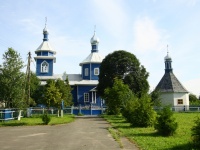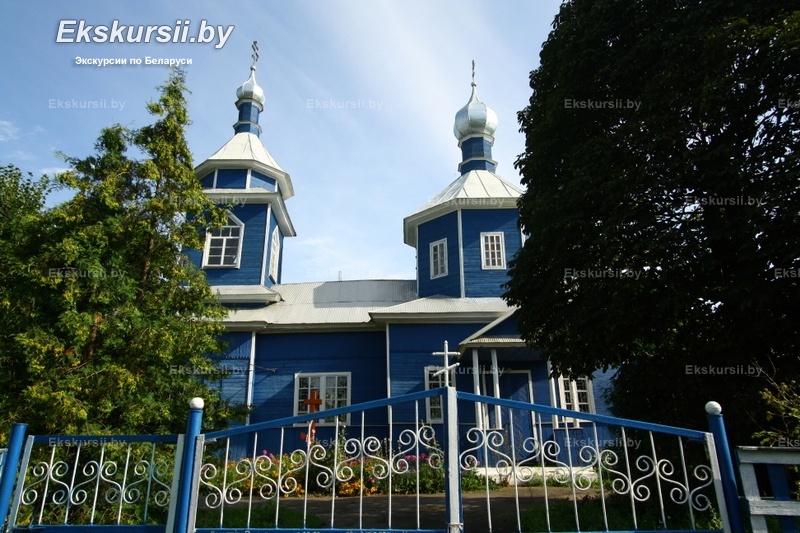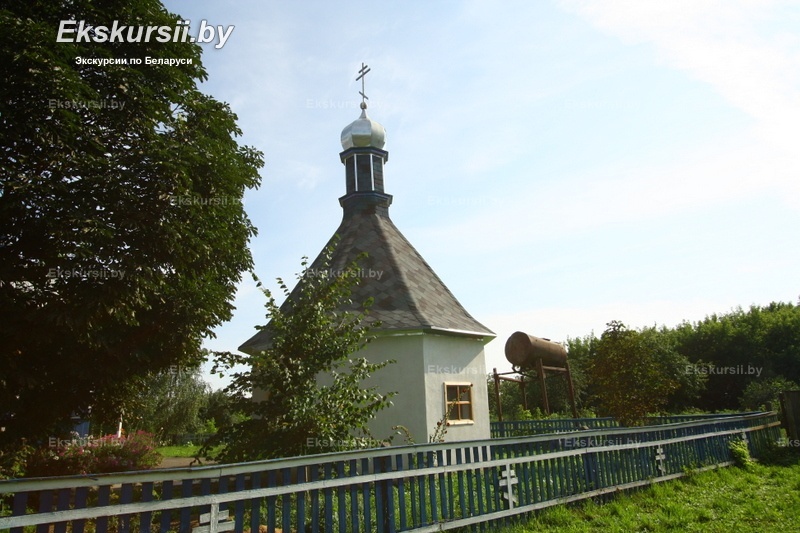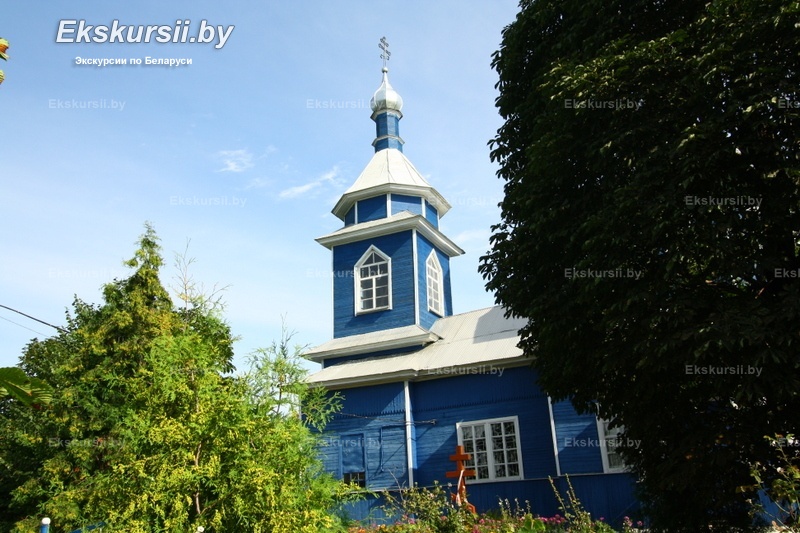- Home
- →
- Attractions
- →
- Church of Trinity in Dvorets
Church of Trinity in Dvorets
Trinity Church in the village of Dvorets is one of the most striking monuments of Belarusian wooden architecture of the 19th century, representing a harmonious combination of folk construction traditions and architectural forms of the Neo-Russian style. This picturesque Orthodox church, located in the very heart of the village, is surrounded by the natural landscapes of the Gomel region and attracts attention from afar with its majestic yet cozy atmosphere. The church is enclosed by a wooden fence, and its grounds are filled with peace and a special tranquility typical of rural churches in Belarus.
Today, Trinity Church is not just an architectural monument, but an actively functioning place of worship welcoming both believers and tourists. It is included in the itineraries of many excursions around Belarus, and visiting it allows one to better understand the national cultural heritage and the unique features of traditional wooden church architecture.
History of Construction
Trinity Church was built in the second half of the 19th century, during a time when wooden churches were actively being constructed throughout what is now Belarus, embodying local building traditions and the religious views of the people. The construction of the church was a significant event for the residents of Dvorets, as it not only fulfilled religious needs, but also became a center of community life.
Despite difficult historical periods, including world wars and changes in political systems, the church has preserved its original architecture and interior decoration. It has become a living witness to the region's history and today is an integral part of the cultural landscape of the Gomel region. Support from the local community and periodic restoration efforts have helped maintain the church in its nearly original state.
Architecture and Spiritual Life
Architecturally, the church is a cross-in-square structure with a dome, typical of Orthodox tradition. The main volume is crowned with a dome, and three apses, located on the sides, are rounded, emphasizing the symmetry of the church. The entire structure is made of wood, which makes it especially valuable from an architectural and historical standpoint.
A decorative arcature frieze runs along the perimeter of the building under the roof — a carved wooden element that adds lightness and elegance to the facades. The entrance to the grounds is adorned with a semicircular arch leading to wooden gates, above which rises a watchtower. This tower serves not only as an architectural focal point but also symbolizes divine oversight and protection of the parish. The interior of the church is traditionally simple, yet retains elements of folk style, including wood carving and icon painting.
The church remains active today, with regular services held, particularly during patronal festivals and religious celebrations, which draw large numbers of people. On holidays, pilgrims and tourists come here to take part in services and immerse themselves in the spiritual life of the Belarusian countryside.
Excursions with Church Visit
Trinity Church in Dvorets enjoys well-deserved popularity among tourists and researchers interested in the history and culture of Belarus. It is part of excursions around Belarus that include sites of traditional architecture and spiritual heritage. Visitors to the capital also have the opportunity to take an excursion from Minsk that includes a visit to this unique site.
You can book an excursion that includes a visit to the church and other attractions of the region, to see this example of spiritual and architectural beauty in person. You will have the chance to learn more about its history, architectural features, and significance to the local community. The excursion may include viewing the interior, attending a service (by prior arrangement), exploring the surrounding village, as well as taking photos and videos against the backdrop of the picturesque landscape.
Visiting Trinity Church will be a vivid and memorable experience, allowing you to connect with the spiritual and cultural roots of Belarus, appreciate the uniqueness of local architecture, and learn more about the life of villages in the Gomel region, both past and present.




